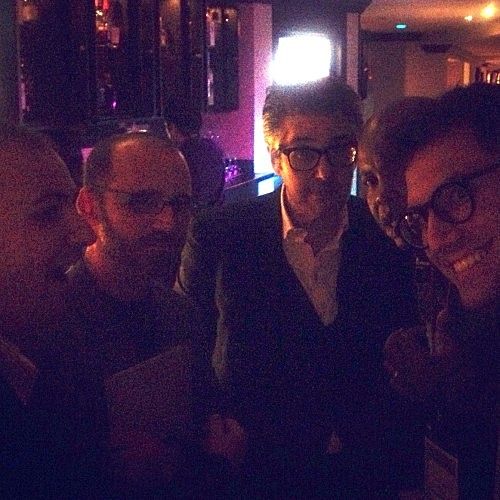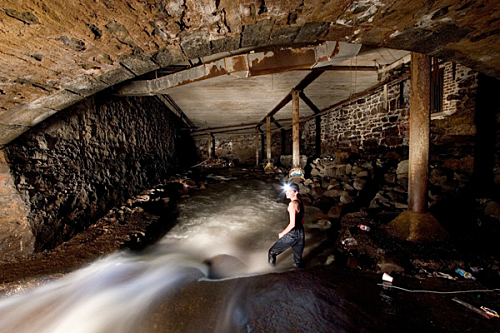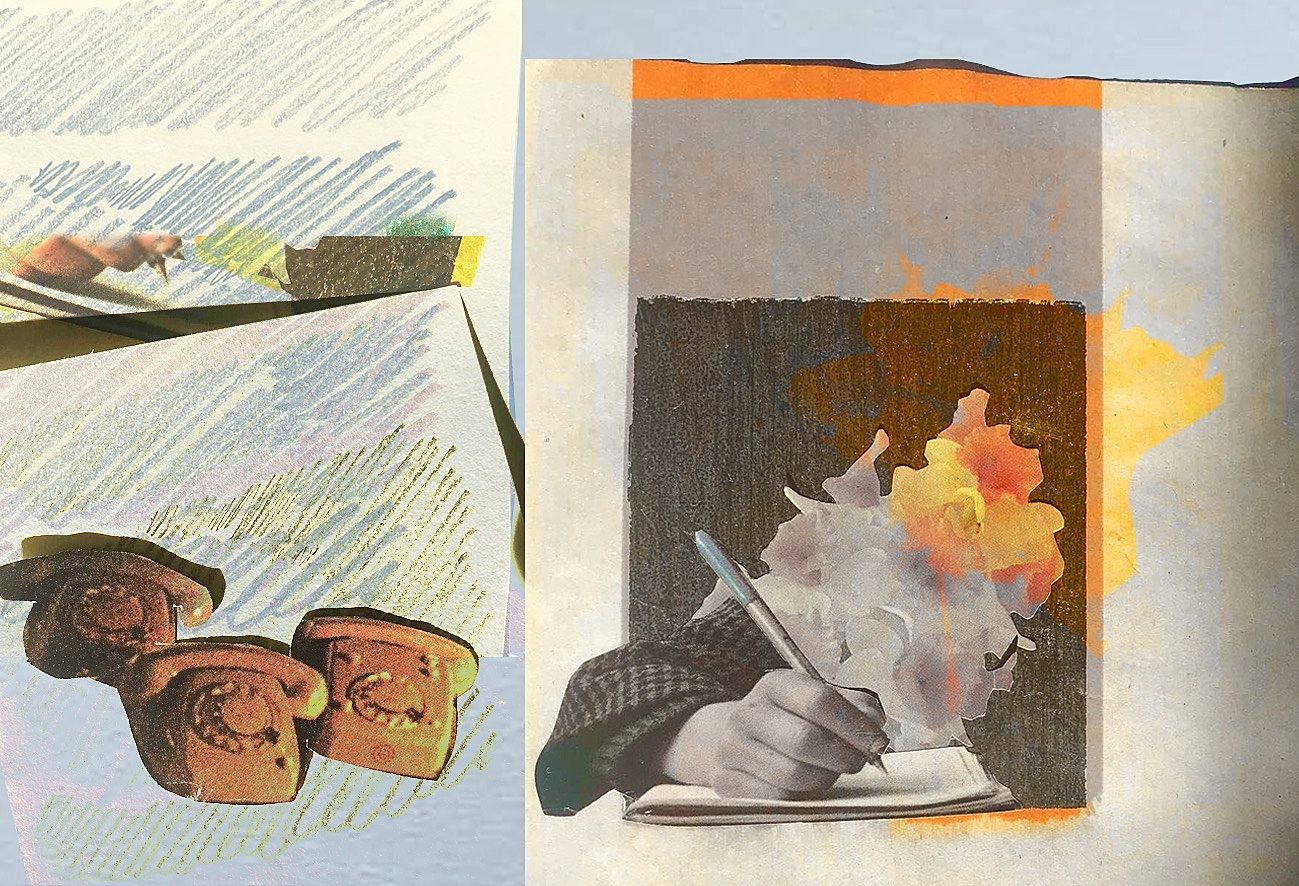Internet Histories | 11 November
The shoestring grand designs of Roman Mars, New Zealand, New Alcatraz and urban spelunking.
This Fortnight:
The shoestring grand designs of Roman Mars
New Zealand, New Alcatraz
Urban spelunking
Bronwyn
Some people would be quite happy going through life just having a really great name: for example, if I were “Roman Mars” I’d probably do very little apart from going place to place and introducing myself, over and over again.
Luckily for fans of radio, the actual Roman Mars isn’t so happy to settle for a life of being a novelty. Instead, as I’m sure many of you know, he’s made a really great radio programme/podcast called 99% Invisible, all about design and architecture, in the broadest sense of both words. (If you haven’t heard any of his programmes, please let me recommend this short one, about the man who placed parenthesis around area codes, and this one about a mysterious structure beloved by teenage potheads).
He recently recorded a long interview with Boing Boing, and he’s illuminating and honest about the medium of public radio, (surprise! it generally needs more diversity), new models of finance (he famously raised enough money for their third season in less than 24hours through Kickstarter, and is currently powering this year’s fundraising campaign), and how to get stuff underway (he had another full time job for the first two years of making it, paid other people whilst he was broke, and the studio was a desk in his bedroom). It’s worth your time of any of these also interest you.
Matt
I don’t know if we can talk pain, because it’s more than that – it’s a sadness that becomes a cloak.
Al Jazeera have released a 25 minute documentary on the New Zealand prison system. It’s not pretty. It also features a rare thing indeed: Anne Tolley, speaking sense to camera.
Did you know? We’ve got the second-highest rate of imprisonment in the west. One in two prisoners is Maori. The cost to keep someone in prison for a year is $94,000. The total cost of our prison system, $7.5 billion, is more than we spend on early childhood education.
Grim statistics, and the documentary rightly focuses on the elephant in the cellblock: why do Maori make up 15% of the general population but 50% of the prison population? It doesn’t do a particularly good job of answering the question; 25 minutes is perhaps insufficient to disentangle the intersection of structural inequality, colonial hangovers, systemic racism and institutional power. It made me wonder, though, what our three main political parties had in the way of policy regarding the bloating prison population and the over-representation of Maori.
The first paragraph of each 'Justice' policy is telling:
National: “National is building a safer New Zealand. We’ve embarked on a comprehensive programme of reform to protect communities, prevent crime, and put victims first. We’ll stay tough on criminals, keep record numbers of Police on the beat, and make sure the justice system focuses on the rights of victims.”
Greens: “A fair, transparent judicial and legal system together with community-based mediation, restoration and rehabilitation, is at the heart of our justice policy. The best way to keeping families and communities safe is to address the causes of crime and where possible prevent it from happening in the first place.”
Labour: “Labour’s vision is of a just society and safe communities. Our vision is of a New Zealand that guarantees civil and human rights, provides equal and full access to justice, and achieves real public safety rather than just delivering immediate punitive measures.”
It should be noted Labour’s policy appears to be a draft, and they keep it hidden in the back of their website in the least user-friendly place possible.
None of them seem to notice the predominance of Maori in prison, and only the Greens have a couple of bullet points detailing Maori-specific intervention strategies; I'd suggest this is blindness bordering on negligence on the parts of all three.
Kyle
Having just moved to London, I’m often surprised at how much it takes to keep the city going. In Auckland, the city is just there. We don’t do much in the way of long-term infrastructure except occasionally lay down another tar-covered lane on a convoluted motorway. Our approach to development seems to be fatalistic; there’s no sense, in Auckland, of any teleology.
London, by contrast, feels interconnected and alive. Stand at any given point in the city and a dozen black cabs and a double decker bus will pass you, a subway car will thunder under your feet, and a passenger jet might fly over above. What I’d not appreciated until moving here was how much all this was necessary to keep the city going: the tube lines are like arteries beneath the city’s concrete skin, pumping train cars like vital blood cells to where they are most needed.
William Langewiesche, in Vanity Fair, writes about New York City’s underground infrastructure with awe that reflects how I first felt about London. He begins with an account of how Hurricane Sandy affected New York’s subways, and the response of the staff who’d devoted their lives to them, then follows an underground enthusiast who takes him through disused underground stations, sewer systems, and giant water tunnels. Throughout the piece, Langewiesche refers to his city as alive — and that it would die without its subterranean support network.
But despite the beauty that urban exploration can bring, it is not without its risks:
A few years ago Duncan and a friend set off on an expedition up a big sewer in Queens. They went some distance in, and as they turned around to head out they noticed that the current had reversed and the water was rising fast. It was the tide coming in—and belatedly they saw indications that it regularly filled the tunnel to the top. With the water rising above their waists, and unable to fight the current for the return, they argued about the course of action to take. Duncan believed there was no time to gamble on manhole covers they might come upon, because so many of them in his experience have been welded shut by the battering of traffic; he believed they should ride the current as far up-sewer as they could get, and at the last moment find a manhole, climb the ladder, and tie themselves there if they couldn’t open the cover—so that if the water kept flooding upward and drowned them while overflowing onto the street, their remains might someday be found rather than being flushed out to sea.




